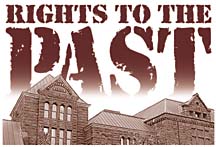
 |
‘Native group’ rule
draws Senate focus
Critics say the current federal
definition of such groups is vague
The U.S. Senate Committee on Indian Affairs will hold a hearing in Honolulu next month to discuss proposed changes to the federal law governing the repatriation of native Hawaiian artifacts and human remains from museums.
PUBLIC MEETING
When: Dec. 8, 8:30 a.m.
Where: Jefferson Hall, Imin Conference Center, at the East-West Center, 1777 East-West Road
|
Inouye, who helped write NAGPRA, said he wants "to ensure that the definition is crafted to include those who should be eligible to assert claims (for human remains and artifacts) under the authority" of NAGPRA.
There are about 135 native Hawaiian organizations recognized under NAGPRA. They range from families and cultural groups to one government agency, the Office of Hawaiian Affairs.
NAGPRA specifically identifies OHA and Hui Malama I Na Kupuna O Hawaii Nei, a group formed in 1989 to repatriate and rebury ancestral bones and artifacts.
Edward Halealoha Ayau, a spokesman for the group, served on Inouye's staff and helped write NAGPRA.
The scope and clarity of the definition of "native Hawaiian organization" is key because it determines whether a group can be recognized as eligible to make a claim.
NAGPRA officials were in Hono-lulu earlier this month to give a training session to explain various terms as they are defined and operate under the law. Some participants criticized various aspects of the law as vague, including the definition of "native Hawaiian organization."
Under NAGPRA, a native Hawaiian organization is "any organization which serves and represents the interests of native Hawaiians; has as a primary and stated purpose the provision of services to native Hawaiians; and has expertise in native Hawaiian affairs."
Recognizing that many more may wish to testify than time will allow during the hearing, the committee is inviting written testimony. Written testimony may be submitted until Jan. 4 and will be included in the final record made of the Dec. 8 hearing.
huimalama.tripod.com
Bishop Museum
www.bishopmuseum.org
U.S. Interior Dept. -NAGPRA
www.cr.nps.gov/nagpra